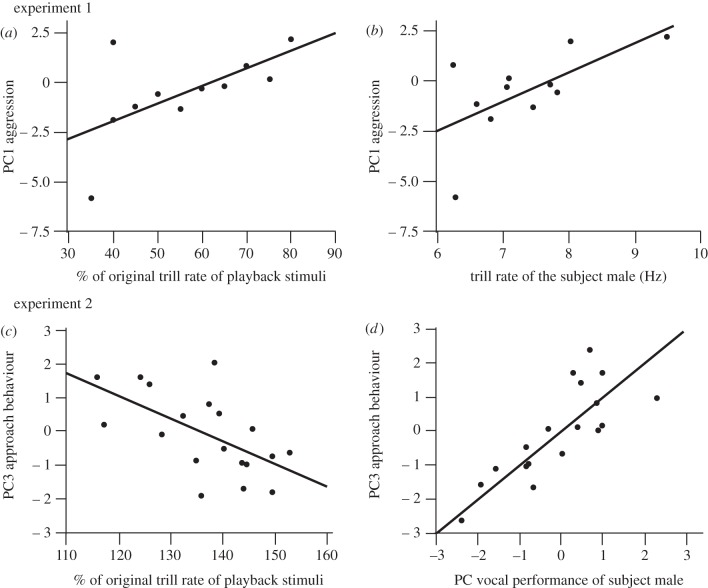Figure 2.
Playback responses as a function of signal vocal performance (a,c) and subject vocal performance (b,d) relationships that were identified in the multiple regression analyses. Experiment 1 (a,b): the y-axis represents the aggressive response to the low-performance trial (PC1 scores of six response variables reduced). (a) The x-axis represents the percentage of the original rate for the low-performance playback stimuli (with stimuli closer to the original rate having percentages closer to 100%, and stimuli with comparatively lower trill rates at lower percentages). Males were more aggressive to stimuli at higher performance levels that more closely resembled the original trill rate. (b) The x-axis represents the subject male's trill rate. Males with higher trill rates (Hz) were more aggressive in response to playback (see electronic supplementary material, table S2). Experiment 2 (c,d): the y-axis represents the level of aggressive response differences (PC3 approach and time spent close to the speaker, table 1), with positive values indicating a more aggressive response to high-performance over control-performance stimuli, and negative values indicating more avoidance of high-performance stimuli and thus more aggression to control-performance stimuli. (c) The x-axis represents percentage of the original rate for the high-performance stimuli (increases from the original rate of 100%, to 115–155% for high performance; table 2 and electronic supplementary material, tables S1 and S3). The more the vocal performance of the playback stimulus was increased, the less likely males were to approach aggressively in terms of distance and time spent close to the speaker. (d) The x-axis represents the vocal performance of the subject males, with higher values indicating males with higher vocal performance (table 2). Males with higher vocal performance themselves approached the high-performance speaker more aggressively and remained longer in close proximity.

